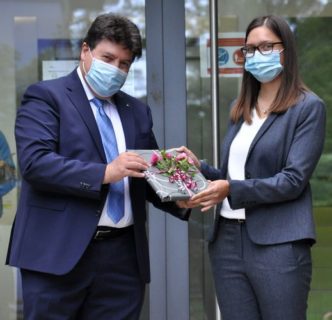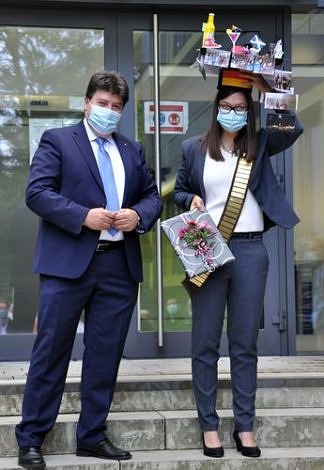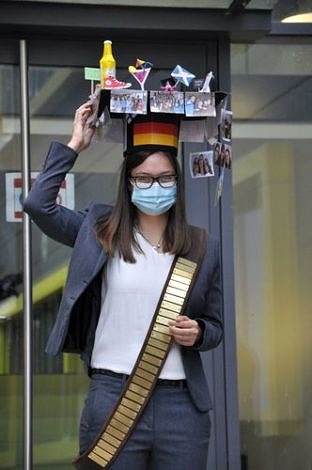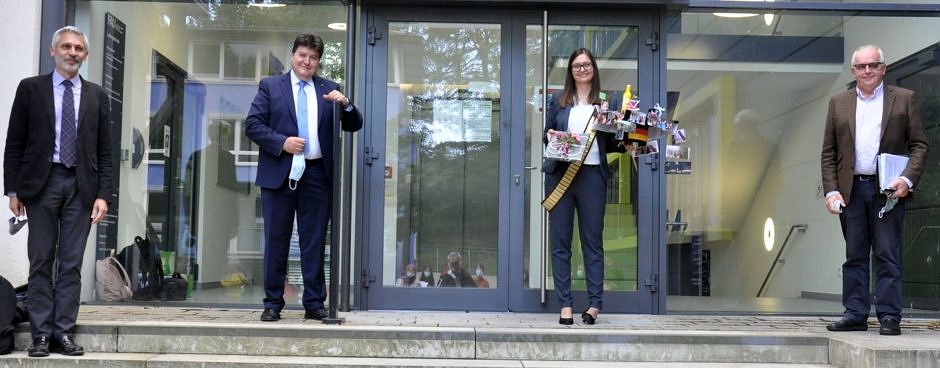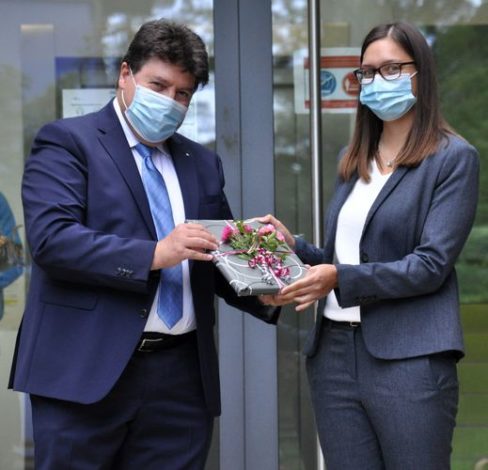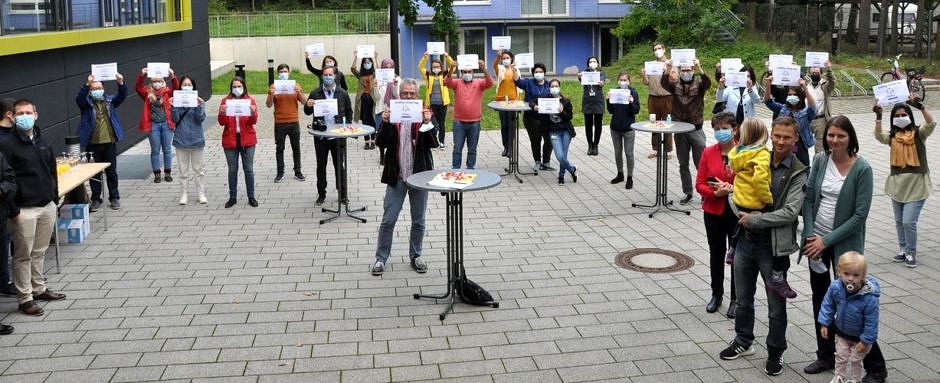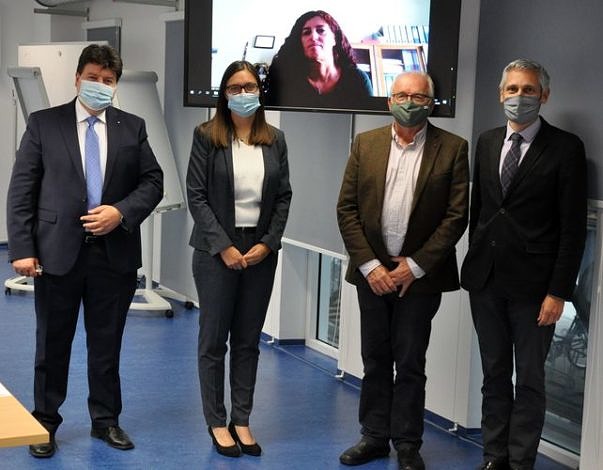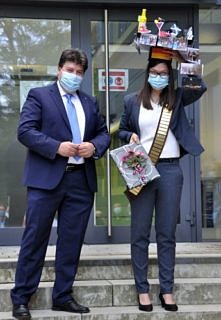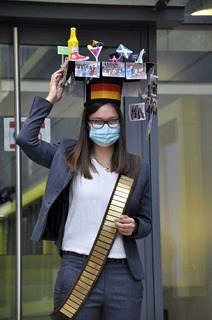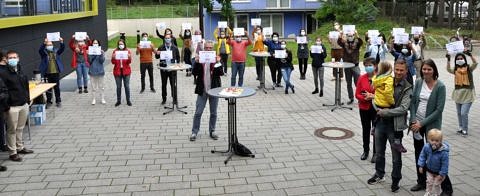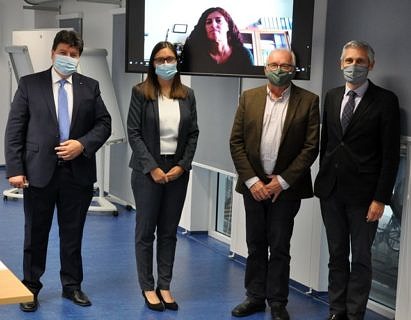Doctoral thesis success: Katharina Schuhladen
We congratulate Katharina Schuhladen, who successfully defended her doctoral thesis entitled “Development of multifunctional wound dressings by using newly designed ion-doped borosilicate and borate bioactive glasses” on 30th September 2020. She carried out her doctoral project in our Institute supervised by Prof. Aldo R. Boccaccini. The examination board was composed by Prof. Valeria Cannillo (University of Modena and Reggio-Emilia, Italy), Prof. Wolfgang Goldmann (Department of Physics, FAU), Prof. Dominique De Ligny (Institute for Glass and Ceramics, FAU) and Prof. Boccaccini.Prof. Boccaccini highlighted the outstanding research work carried out by Katharina, covering many scientific and technology fields, from bioactive glasses and composite materials to phytotherapeutic agents, immunological response and antibacterial properties of biomaterials for wound healing applications. Indeed the work of Katharina led to the development and characterization of novel bioactive glass containing biodegradable composites enriched by the presence of Manuka honey as potent phytotherapeutic agent to achieve synergistic effects with biologically active ions. Several papers and book chapters have already been published from the results of her thesis (for example [1-3]).Many congratulations to Katharina for her doctorate degree and we wish her all the best in her future career.
[1] K. Schuhladen, et al., Manuka honey and bioactive glass impart methylcellulose foams antibacterial effects for wound healing applications, Biomed. Mater. 15 (2020) 065002.
[2] K. Schuhladen, et al., Cu, Zn doped borate bioactive glasses: antibacterial efficacy and dose-dependent in vitro modulation of murine dendritic cells, Biomaterials Science 8 (2020) 2143-2155.
[3] K. Schuhladen, et al., Bioactive glasses meet phytotherapeutics: The potential of natural herbal medicines to extend the functionality of bioactive glasses, Biomaterials 217 (2019) 119288.

